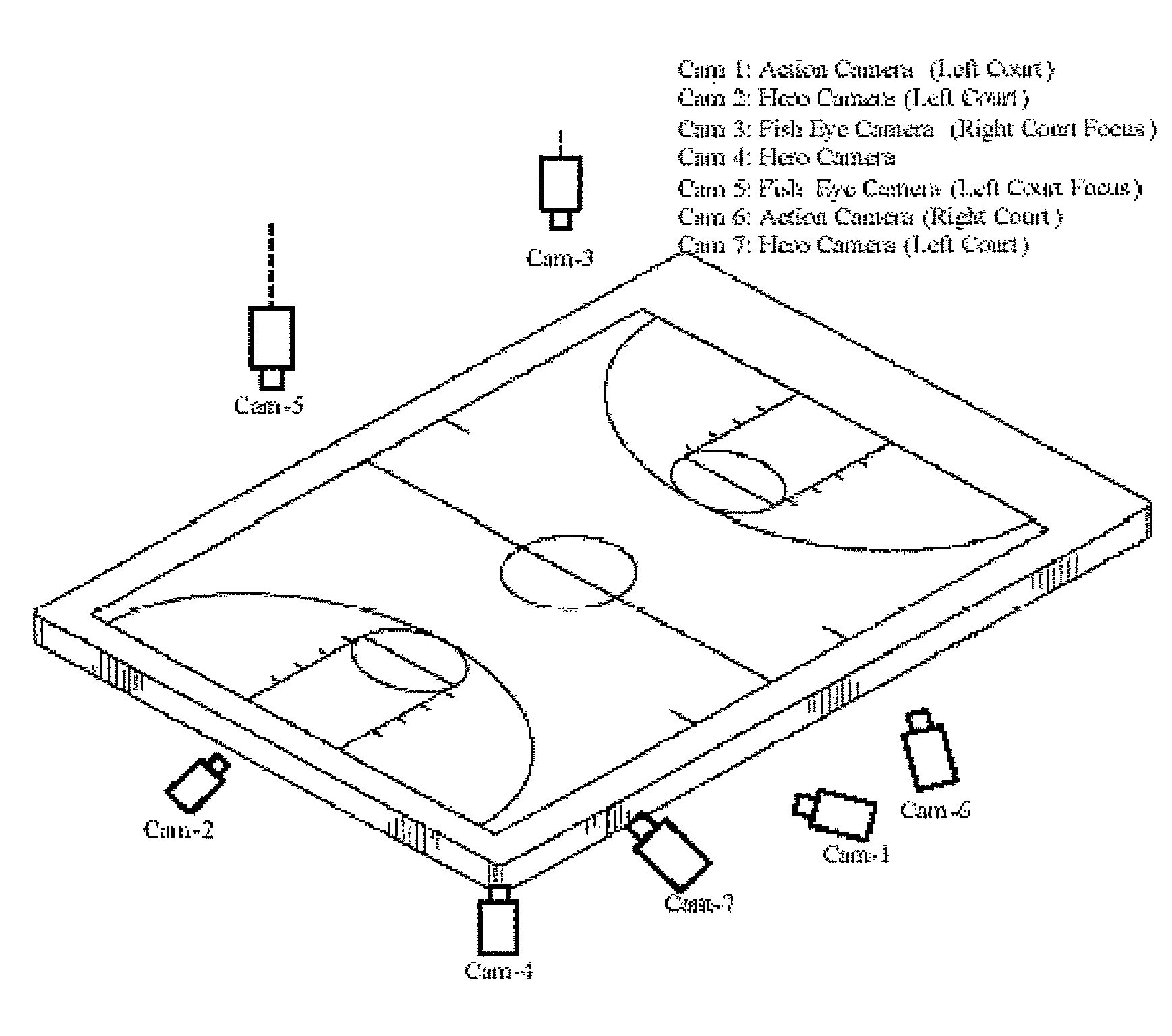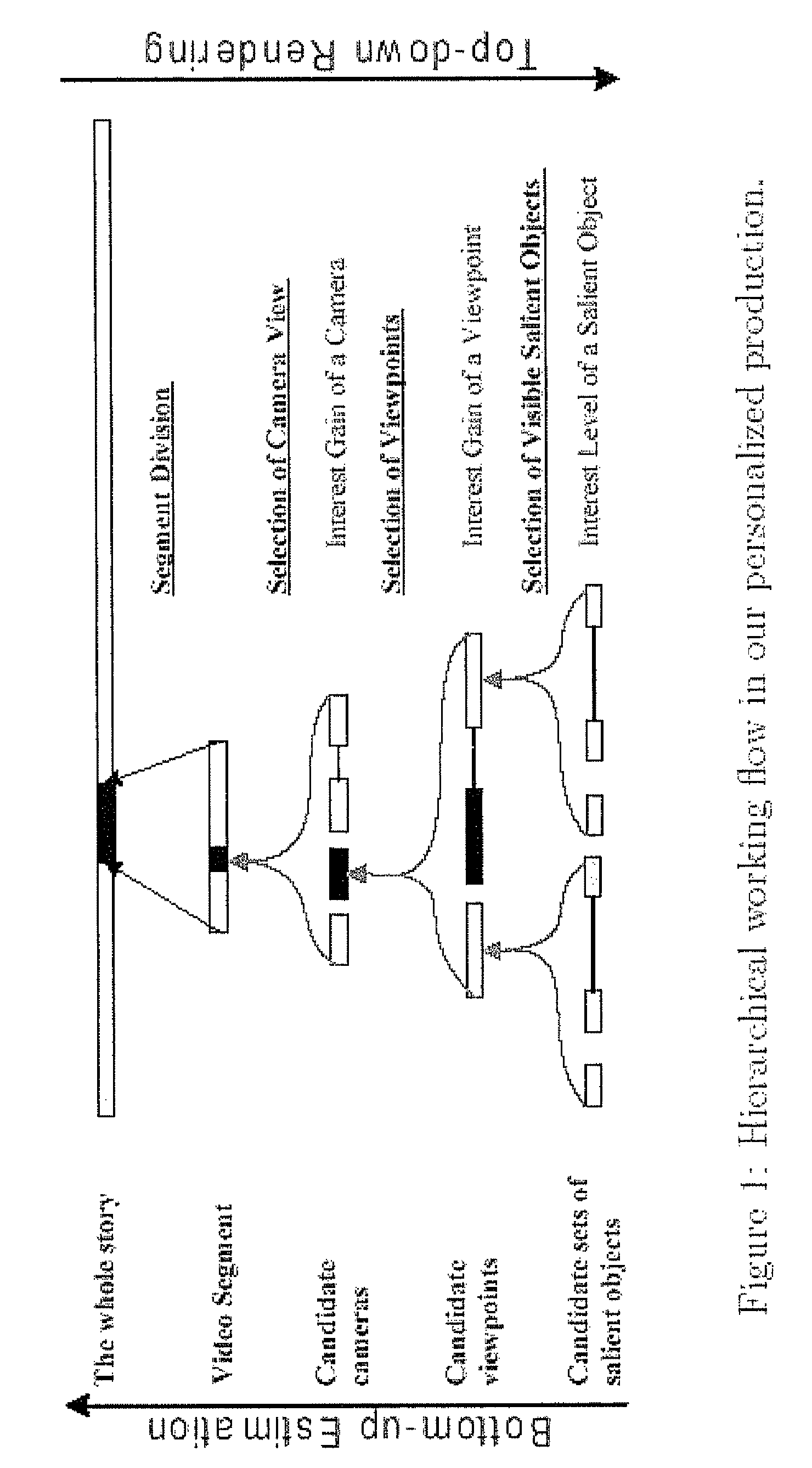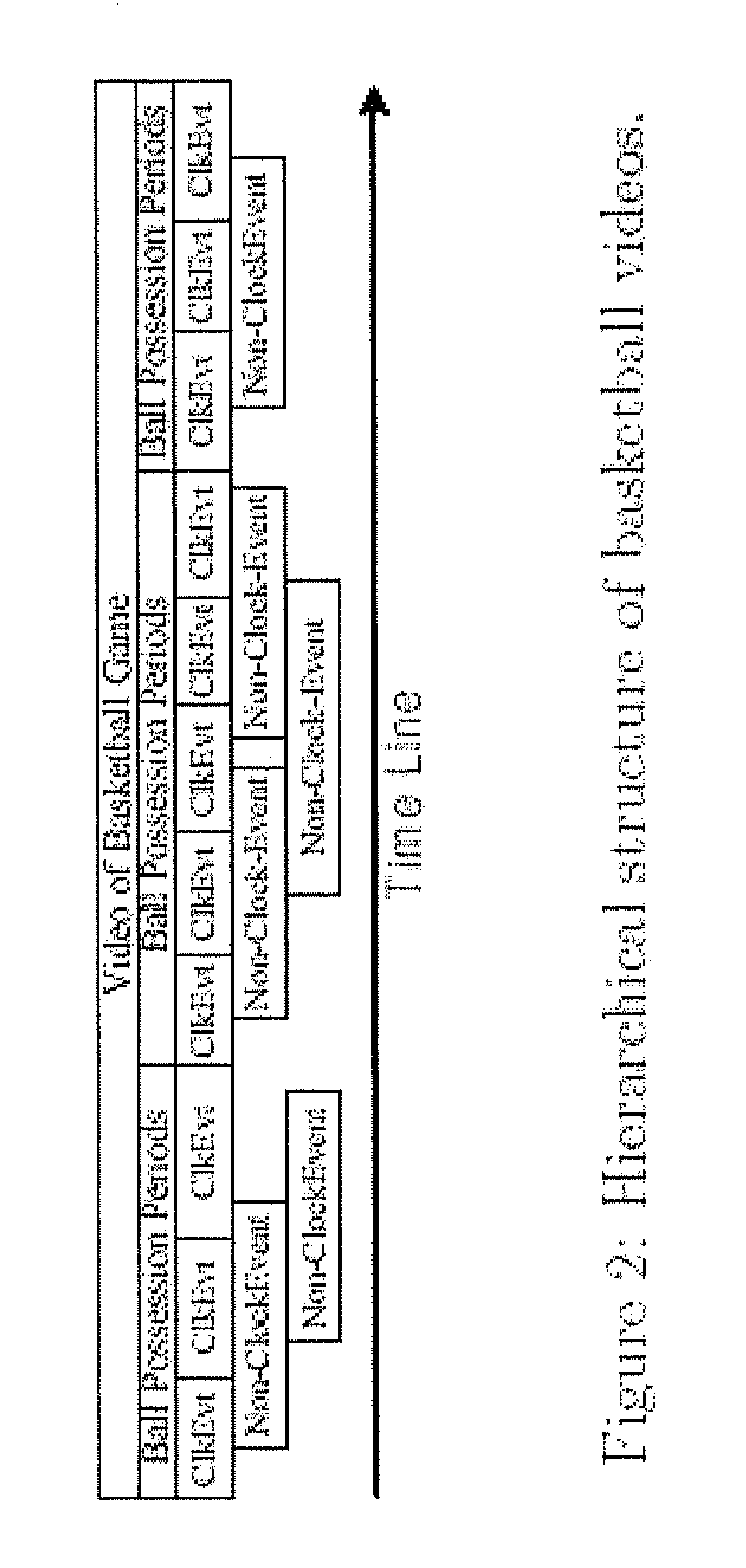Systems and methods for the autonomous production of videos from multi-sensored data
a multi-sensored data and video technology, applied in the field of systems and methods for the autonomous production of videos from multi-sensored data, can solve the problems of not providing a solution to select one, blurred, uncomfortable visual artefacts, etc., to reduce the amount of virtual camera movement, and reduce the effect of bottleneck
- Summary
- Abstract
- Description
- Claims
- Application Information
AI Technical Summary
Benefits of technology
Problems solved by technology
Method used
Image
Examples
Embodiment Construction
[0159]The present invention provides computer based methods and systems for cost-effective and autonomous generation of video contents from multi-sensored data including automatic extraction of intelligent contents from a network of sensors distributed around the scene at hand. Here, intelligent contents refers to the identification of salient segments within the audiovisual content, using distributed scene analysis algorithms. This knowledge can be exploited to automate the production and personalize the summarization of video contents.
[0160]Without loss of generality and without limiting the present invention, only static cameras will mainly be described as an illustrative embodiment.
[0161]One input is the positions of objects of interest. To identify salient segments in the raw video content, multi-camera analysis is considered, whereby relevant object detection such as people detection methods relying on the fusion of the foreground likelihood information computed in each view c...
PUM
| Property | Measurement | Unit |
|---|---|---|
| height | aaaaa | aaaaa |
| height | aaaaa | aaaaa |
| field of view | aaaaa | aaaaa |
Abstract
Description
Claims
Application Information
 Login to View More
Login to View More - R&D
- Intellectual Property
- Life Sciences
- Materials
- Tech Scout
- Unparalleled Data Quality
- Higher Quality Content
- 60% Fewer Hallucinations
Browse by: Latest US Patents, China's latest patents, Technical Efficacy Thesaurus, Application Domain, Technology Topic, Popular Technical Reports.
© 2025 PatSnap. All rights reserved.Legal|Privacy policy|Modern Slavery Act Transparency Statement|Sitemap|About US| Contact US: help@patsnap.com



